In the fast-paced arena of small business, space is not just a commodity; it’s a pivotal element of success. Navigating the challenges of inventory management, equipment storage, and efficient operations requires innovative solutions that go beyond the traditional. Enter the realm of commercial storage units—a modern-day game-changer that revolutionizes how small businesses leverage space.
These units are not mere repositories for assets but versatile, secure environments designed to cater to the multifaceted demands of growing enterprises.
Today’s commercial storage solutions are meticulously designed to meet the complex demands of businesses, offering spacious, flexible environments capable of housing large inventories while also serving operational needs. For small businesses wrestling with the challenges of limited storage space and the imperative for secure, accessible storage options, these units are a revelation.
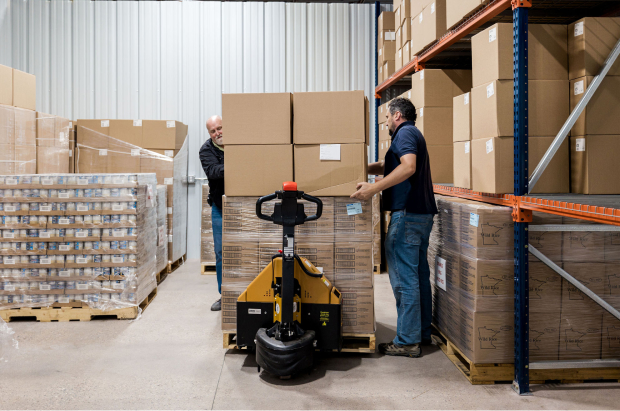
The Importance of Storage Space for Small Businesses
Small businesses often find themselves in a tight spot when it comes to managing their inventory and securely storing valuable equipment and documents. Limited space can quickly become a bottleneck for growth, not just in terms of physical inventory but also in maintaining the organization and accessibility of critical business assets. This scenario is particularly challenging for growing enterprises that are scaling operations but are not yet ready or able to invest in larger premises. The consequences of inadequate storage solutions can be far-reaching, leading to:
- Inefficient Operations: Mismanaged inventory can result in order processing delays, missed sales opportunities, and a poor customer experience.
- Increased Risks of Damage or Loss: Without proper storage, goods are more susceptible to damage, theft, or misplacement, directly impacting the bottom line.
- Operational Disruptions: The time spent managing inventory in cramped or unsuitable spaces can detract from core business activities, affecting overall productivity.
Recognizing these challenges, commercial storage spaces emerge as a vital solution, offering features specifically designed to alleviate the pressures faced by small businesses. Here’s how they bridge the gap:
- Flexible Storage Solutions: These units come with a variety of sizing options to cater to different business needs, allowing for upscaling or downscaling in response to seasonal market demands, inventory turnover rates, and business growth. The flexibility of month-to-month leasing agreements, as opposed to long-term commercial leases, means businesses can adjust their storage space without the burden of significant financial commitments or penalties.
- Secure, Accessible Spaces: Security is a paramount concern for businesses that store sensitive documents, high-value items, or proprietary equipment. Commercial storage facilities are equipped with advanced security features such as 24/7 surveillance, controlled access, and sometimes even climate-controlled units to protect against environmental damage. These measures ensure that valuable assets are kept in a secure environment, mitigating the risk of theft, loss, or damage. Moreover, the accessibility of these units is designed to suit business operations, offering convenient access hours that align with business needs, ensuring that inventory or equipment is available when needed.
- Cost-Effectiveness: By utilizing commercial storage solutions, small businesses can avoid the hefty expenses associated with expanding their physical premises or moving to a larger location. This cost-saving measure not only helps manage operational costs more effectively but also frees up capital for other critical areas of the business, such as product development, marketing, or expansion efforts.
- Enhanced Efficiency: With the right storage solution, businesses can streamline their inventory management processes, making it easier to track and access stock, which in turn, speeds up order fulfillment and improves customer satisfaction. The organization facilitated by these storage units can also lead to better inventory accuracy, reducing the likelihood of overstocking or stockouts.
Commercial storage solutions offer a lifeline for small businesses wrestling with the challenges of inventory and equipment management. By providing flexible, secure, and cost-effective options, these facilities enable businesses to optimize their operations, safeguard their assets, and position themselves for growth without the immediate need for larger, more expensive premises.
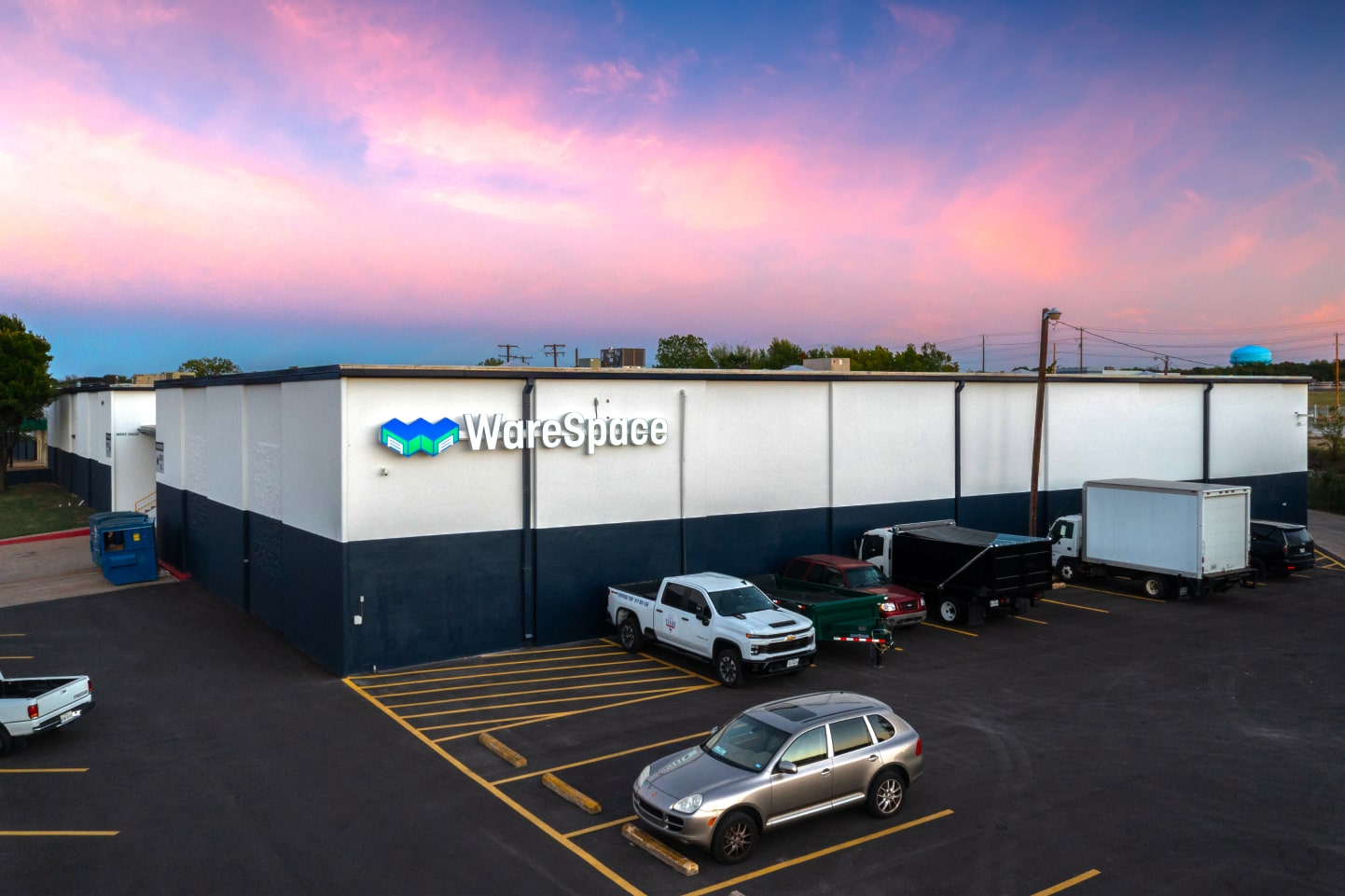
Tour a Commercial Storage Unit TODAY!
See how a commercial storage unit can transform your businesses.
Flexible Storage Solutions for Evolving Business Needs
Adaptability is key for small businesses facing fluctuating demands and growth opportunities. Renting commercial storage space provides the necessary flexibility, offering both short-term and long-term leasing options. This allows businesses to efficiently manage inventory during seasonal highs and lows, support new product launches, and accommodate gradual business expansion without the financial burden of unused space or rigid lease agreements.
Commercial storage solutions are designed to meet the diverse needs of small businesses across various sectors. Whether it’s an e-commerce venture that requires scalable space to handle inventory fluctuations or a brick-and-mortar shop in need of additional storage for stock, there’s a solution to fit every requirement. These storage solutions ensure that businesses can secure the space they need for their products, equipment, or documents, tailored to their specific industry and operational demands.
- E-commerce and Retail: Flexible units allow for the adjustment of storage space in line with inventory changes, providing a cost-effective way to manage stock levels throughout the year.
- Service-Based Businesses: For companies that rely on equipment and materials, nearby storage units offer a secure and accessible option to store valuable assets, reducing transportation time and costs.
Flexible lease terms are another critical feature, enabling businesses to navigate changes in their operations or market conditions without being tied down by long-term commitments. This level of adaptability and customization ensures that small businesses can leverage storage solutions that not only meet their current needs but can also evolve with them as they grow, allowing them to focus on their core activities with the assurance that their storage needs are efficiently managed.
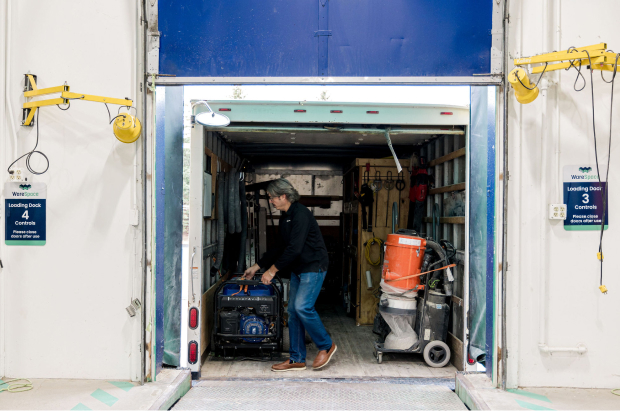
Advantages of Commercial Storage for Small Business Operations
Commercial storage units go beyond mere storage; they serve as multifunctional spaces that can dramatically transform the efficiency and dynamics of small business operations. This innovative approach to commercial storage brings several key advantages:
- Enhanced Efficiency and Productivity: By offering well-organized spaces tailored to the needs of small businesses, these warehouses facilitate smoother operations. An orderly storage environment reduces the time spent searching for items, streamlining inventory management and freeing up valuable time that can be invested back into the business.
- Opportunities for Collaboration: One of the unique benefits of commercial storage units are the potential for networking and collaboration. Businesses operating in close proximity can share resources, knowledge, and even clientele, fostering a community of support and innovation. This collaborative environment can lead to cost-sharing opportunities for logistics and supplies, mutual referrals, and even joint marketing efforts.
- Flexible Space for Various Activities: Unlike traditional storage units, commercial storage units often provide the flexibility to use the space for a range of activities, from packing and shipping operations to small-scale manufacturing or assembly. This versatility is particularly beneficial for businesses that require more than just storage, such as those needing a place for photo shoots, product testing, or customer showcases.
The financial advantages of opting for commercial storage units, especially shared spaces, are significant:
- Lower Overhead Costs: Traditional commercial leases often come with high monthly rents and long-term commitments, which can be a heavy burden for small businesses. In contrast, renting commercial storage space, particularly commercial storage units, can be much more economical. These spaces typically offer more competitive pricing and flexible terms, allowing businesses to scale up or down as their needs change without incurring hefty penalties or unused space costs.
- Reduced Capital Expenditure: By utilizing commercial storage facilities, businesses can avoid the substantial upfront costs associated with purchasing or leasing larger premises. This includes savings on not only the lease or purchase price but also on utility bills, maintenance costs, and property taxes. Moreover, shared spaces may come equipped with shelving, packing stations, and other essential infrastructure, further reducing the need for individual businesses to invest in these items.
- Operational Cost Savings: Commercial storage units can lead to significant operational savings. The collective use of utilities, security systems, and even staffing (for shared reception or logistics management, for example) means that individual businesses can enjoy the benefits of a fully operational warehouse without bearing all the costs alone. This shared cost model can make a substantial difference in the monthly expenses of a small business.
The advantages of using commercial storage spaces, particularly commercial storage units, are manifold. They offer a blend of operational efficiency, opportunities for collaboration, and cost-effectiveness that traditional commercial leases cannot match. For small businesses looking to optimize their operations while keeping costs in check, these storage solutions present a compelling option.
Making the Most of Your Commercial Storage Space
Leveraging commercial storage space effectively is crucial for small businesses seeking to enhance efficiency, secure their assets, and ensure smooth operations. By employing strategic organization, optimizing inventory management, and creating functional operational areas within commercial storage units, businesses can significantly improve their productivity. Furthermore, prioritizing security measures and ensuring easy access to storage units are essential steps in safeguarding a company’s valuable resources while maintaining operational flexibility.
Making the most of commercial storage solutions not only supports business growth but also provides a scalable and cost-effective way to manage the ever-changing demands of the market. With the right approach, commercial storage units can become a cornerstone of a small business’s operational strategy, facilitating success in today’s competitive landscape. Schedule a tour today and discover firsthand how WareSpace can empower your business with tailored commercial storage solutions. Let us help you transform your operational strategy and navigate the competitive market with confidence. Explore Our Commercial Storage Units.
Blog Info: Author – Michael Thompson Category – Commercial Storage Insights
In a world where the click of a button can send products hurtling across continents, mastering the complexities of a shipping process workflow has become the linchpin of business success. It’s the invisible thread that weaves through the heart of commerce, connecting products with people.
This exploration is not just for the logistics aficionado but for every business looking to carve a niche in the sprawling marketplace of today. Embark on this journey with us as we unravel the intricacies of the shipping process workflow, a crucial element for businesses aiming to streamline operations, improve customer satisfaction, and secure a competitive edge. Whether you’re laying the groundwork for a new venture or fine-tuning an established shipping strategy, understanding the shipping and receiving process workflow is your first step towards logistics mastery.
What Is a Shipping Process Workflow?
A shipping process workflow is an organized sequence of actions implemented to ensure that products or goods are delivered to customers efficiently and on time.
It outlines the end-to-end process, from receiving an order to delivering it to the customer, including critical steps such as inventory management, order packing, and shipment. Although each business’s shipping workflow may vary slightly, the core objective remains consistent: to streamline the delivery process, enhancing both speed and reliability of shipments. This systematic approach is vital for businesses to satisfy customer expectations and maintain a competitive edge in the marketplace.
WareSpace is at the forefront of revolutionizing shipping workflows for small and medium-sized businesses. Our shared warehouse solutions not only offer storage space but also empower businesses to run their operations effectively, ensuring products are delivered with unparalleled efficiency and speed. Book a tour with WareSpace today and transform your shipping strategy into a competitive advantage.

Key Components of a Shipping Process Workflow
The journey from warehouse shelf to customer doorstep is a complex one, involving a series of carefully coordinated steps known as the shipping process workflow. For small and medium-sized businesses, mastering this flow is essential for meeting customer expectations and driving satisfaction.
In this section, we dissect each stage of the shipping process, providing insights into the meticulous operations that ensure every order is handled with precision and care. From the moment a product arrives at the warehouse to the final delivery confirmation, we’ll explore how each step is an integral part of a seamless shipping experience.
Here is a step-by-step breakdown of the shipping process:
1. Product Received
Upon arrival, each product undergoes a rigorous inspection to verify both quality and quantity against the original purchase order. This step is crucial for ensuring that every item meets the company’s high standards and accurately matches what was ordered, safeguarding against discrepancies that could impact inventory accuracy and customer satisfaction. This process might involve scanning barcodes, checking for damage, and verifying product specifications to ensure every item is ready for the next step in the supply chain.
2. Product Stored
After inspection, items are carefully organized and stored within the warehouse. This involves placing goods in designated locations where they can be easily accessed for order fulfillment. Efficient storage solutions, such as racking systems and bin locations, are utilized to optimize space and preserve product integrity. The precise location of each product is logged into an inventory management system, enabling quick retrieval and reducing the time it takes to process orders.
3. Order Received in the Shipping Platform
The moment a customer places an order, it is captured by the shipping platform. This digital record is critical for order tracking and management, serving as the foundation for the entire fulfillment process. The platform consolidates orders to streamline the picking process, ensuring that warehouse staff have all the necessary information, including order priority and special handling instructions, to begin fulfillment without delay.
4. Pick List Generated
A detailed pick list is then generated by the system, specifying the exact locations of the products within the warehouse. This document guides the warehouse team directly to the items needed for each order, optimizing the picking process by minimizing travel time and errors. The pick list often includes information such as item quantities, bin numbers, and special considerations, ensuring that the correct items are collected efficiently.
5. Packing
Once collected, items are meticulously packed for shipment. This step involves selecting the appropriate packaging materials to protect the contents during transit and accommodate any custom packaging requests from the customer, such as gift wrapping or branded packaging. Additional materials, including bubble wrap, packing peanuts, or air pillows, are used as needed to ensure items arrive in perfect condition. Promotional inserts or special instructions are also included at this stage.
6. Postage Purchased, Label Generated
With the package ready, its weight and dimensions are used to calculate postage, which is then purchased from the selected carrier. A shipping label, complete with the recipient’s address and a tracking number, is generated and securely affixed to the parcel. This label is crucial for both logistical control and providing customers with the ability to track their orders in real-time.
7. Shipped
The prepared packages are dispatched through the chosen shipping channels, selected based on delivery speed requirements and destination. This could range from standard ground shipping to expedited or international options. The departure of the package is meticulously recorded in the system, triggering notifications to customers with tracking information, allowing them to follow their order’s journey to their doorstep.
8. Package Arrives
The final milestone in the shipping process workflow is the successful delivery of the package to the customer. Upon delivery, automated systems notify the customer of their package’s arrival, marking the completion of the shipping process. This notification often invites feedback or provides instructions for any necessary follow-up, ensuring customer satisfaction and closing the loop on the shipping process with a positive end-user experience.
These steps illustrate the intricate operations behind a seamless shipping experience, emphasizing the importance of mastering this flow for customer satisfaction.
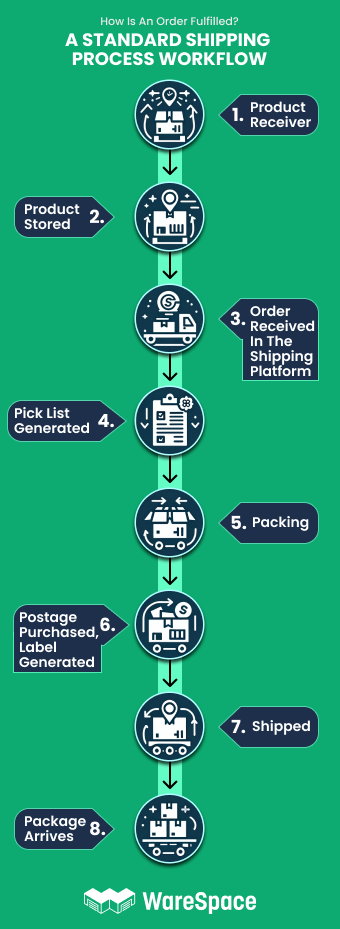
Challenges in the Shipping Process and How to Overcome Them
The journey from warehouse to doorstep is fraught with challenges that can disrupt the smooth sailing of your shipping process. From inventory discrepancies that throw off stock levels to delayed shipping times that test customer patience, and order mismanagement that can lead to unhappy customers, each hurdle requires a strategic approach to overcome. Here’s how businesses can navigate these waters with precision and agility.

Unlock the Secrets to Small Business Expansion in 2024!
Loaded with crucial trends and statistics, this is your roadmap to dominate the market. Act now – download your free guide and unleash your business’s full potential!
Inventory Discrepancies
Problem:
A mismatch between actual stock and inventory records can lead to stockouts, backorders, and unhappy customers.
Solutions:
- Implement Real-time Inventory Tracking: Use technology that updates inventory levels in real-time as orders are processed and stock is received or returned.
- Regular Audits: Conduct regular physical counts and reconcile them with inventory records to catch and correct discrepancies early.
- Integrated Systems: Ensure your inventory management system is integrated with your sales channels to automatically adjust stock levels as orders are placed.
Delayed Shipping Times
Problem:
Delays in order fulfillment and shipping can damage your brand’s reputation and customer loyalty.
Solutions:
- Optimize Warehouse Layout: Arrange your warehouse efficiently to minimize the time it takes to pick and pack orders.
- Automate Where Possible: Use automation tools for tasks like order picking, packing, and shipping label generation to speed up the process.
- Reliable Shipping Partners: Work with reliable shipping carriers and have contingency plans for peak times or unexpected delays.
Order Mismanagement
Problem:
Incorrect orders, mishandling, and processing errors can lead to returns, exchanges, and dissatisfied customers.
Solutions:
- Streamlined Order Processing: Implement a streamlined order processing system that reduces manual handling and the potential for errors.
- Quality Control Checks: Introduce quality control checks at various stages of the order fulfillment process to ensure accuracy and integrity of shipments.
- Staff Training: Invest in comprehensive training programs for your staff to ensure they understand the importance of accuracy and efficiency in order fulfillment.
Embracing Technology
Across all these challenges, the implementation of advanced technology solutions stands out as a critical enabler of efficiency and accuracy. Investing in a robust shipping and receiving process workflow platform can automate many of the manual tasks that slow down the shipping process and lead to errors. Features like smart barcode scanning, automated picking lists, and real-time tracking can dramatically improve the efficiency of your operations.
Adopting a mindset of continuous improvement is vital. Regularly review your shipping processes, solicit feedback from customers and staff, and be willing to adapt and evolve your strategies. This proactive approach ensures that your shipping operations can meet the demands of a dynamic market and continue to provide value to your customers.
By addressing these challenges with a combination of technology, training, and strategic planning, businesses can enhance their shipping process workflow, resulting in happier customers and a more robust bottom line.

The international shipping process flow chart
Navigating the complexities of international shipping can be daunting. Beyond the basic steps of the shipping process, international shipments involve additional layers like customs clearance and adherence to specific regulations that vary from country to country, and sometimes, even between carriers.
When shipping products across borders, businesses must engage with a network of certified export haulage, origin handlers, and cross-border transportation methods including trucks, flights, or ocean freight. The workflow may encounter unique disruptions, especially if the goods being shipped fall under restricted categories. Commonly prohibited items can range from lithium-ion batteries and explosives to seemingly benign goods like certain fruits, vegetables, and nail polish.
Restrictions not only differ by country but can also be specific to the carrier. It’s essential to check with your delivery partners to ensure compliance with international shipping regulations. If one partner can’t carry your shipment, another might be able to accommodate your needs.
Choosing a third-party logistics provider for international shipping requires careful vetting. Ask for references and verify their reputation to avoid shortcuts that could compromise your shipment. A cautionary tale involves the brand Frostbite, whose orders were consolidated into a single crate by an unscrupulous provider, resulting in all items being mistakenly delivered to one address.
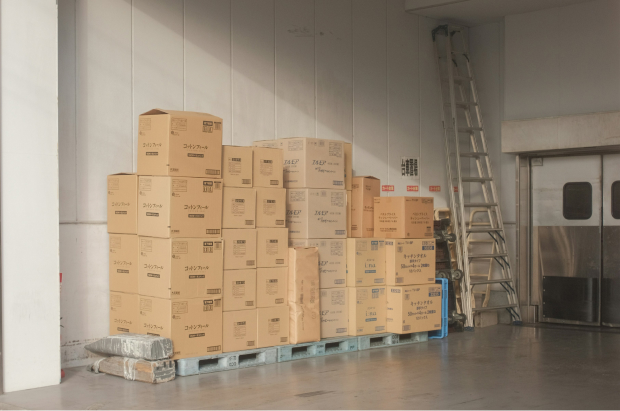
Key Steps in International Shipping:
- Export Customs Clearance: Ensuring all goods meet the export regulations and are cleared for departure from the origin country.
- Export Haulage: The movement of goods from the shipper’s premises to the origin port or terminal.
- Origin Handling: The process of unloading, inspecting, and validating the cargo at the origin port or terminal.
- Ocean Freight or Alternative Transportation: The transfer of goods via ocean freight, airfreight, or overland to the destination country.
- Destination Handling: Handling of cargo at the destination port, including unloading and transfer to the destination warehouse or terminal.
- Import Customs Clearance: Compliance with the destination country’s import regulations and securing clearance for the goods to enter the country.
- Import Haulage: The final delivery of goods to the consignee’s premises.
For businesses operating within North America, it’s important to note the United States-Mexico-Canada Agreement (USMCA) that came into effect in July 2020, replacing NAFTA. This new trade agreement mandates that shipments include a USMCA Certification of Origin among other US customs forms.
Understanding these steps and preparing for the intricacies involved is vital for a seamless international shipping process. Here’s a visual representation of the flow chart that can help you visualize the journey of an international shipment.

Benefits of an Efficient Shipping Process Workflow
Streamlining the shipping process is crucial for enhancing customer satisfaction, reducing errors, and cutting operational costs. By focusing on the three pillars of the iron triangle—quality, speed, and cost—businesses can adjust their shipping workflows to meet diverse customer needs efficiently, even when working with third-party logistics partners. Below, we delve into ways to improve each aspect of your shipping process.
Improve your shipping quality:
- Quality Control from the Source: Regular visits to your warehouse or your partner’s facility can provide firsthand insight into the quality of operations, helping to maintain high standards.
- Maintain a Workflow Log: Keeping a detailed log of the shipping process can highlight successes and pinpoint areas for improvement, providing valuable data for enhancing quality.
- Leverage Automation: Implementing barcode scanners, RFID scanners, and even robotics can significantly reduce the margin for human error.
- Red-Team Your Process: Act as your own customer to experience your shipping process firsthand, from ordering to unboxing, to identify any gaps in quality.
- Invest in Your Team: A well-supported and motivated workforce is more likely to perform better, leading to fewer mistakes and higher quality shipping experiences.
- Optimize with Small Warehouse Space: Small warehouse spaces, like those offered by WareSpace, allow for more controlled, organized, and efficient handling of goods. This can lead to a more personalized quality control process, ensuring that products are stored correctly, handled with care, and shipped out in pristine condition, reflecting the high standards of your brand.
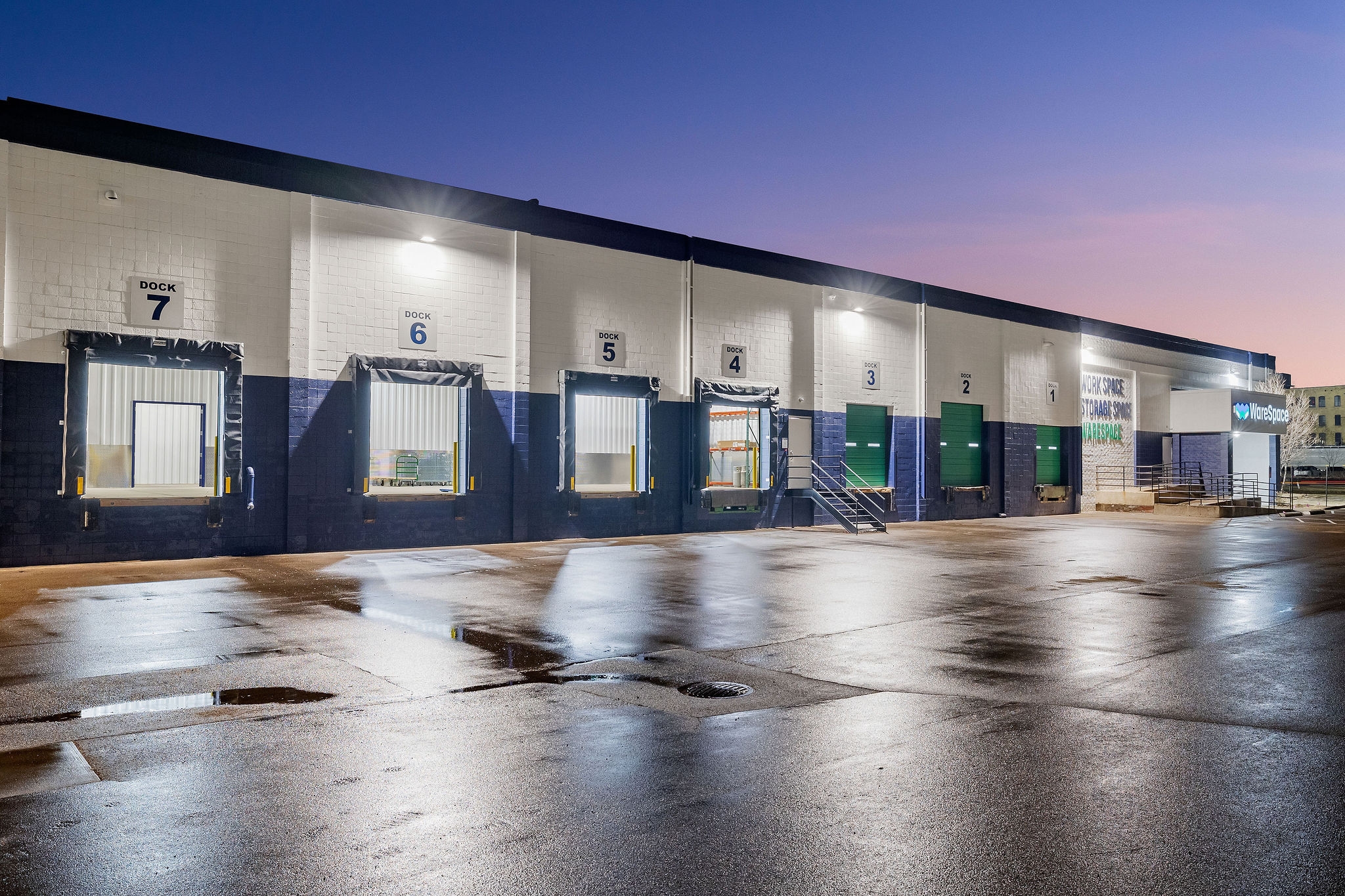
Tour a small warehouse space TODAY!
See how a small warehouse space can transform your businesses.
Improve your workflow speed:
- Dimensional Weight Shipping Costs: Automatically calculating shipping costs based on dimensional weight can streamline the packing process, increasing efficiency by up to 20%.
- Warehouse Automation: Invest in technologies that save time, such as barcode or RFID scanners, fleet tracking apps, and warehouse automation tools.
- Simplify Packaging: Reevaluate your packaging process to eliminate unnecessary steps and materials, which can also contribute to cost savings.
- Strategic Item Placement: Organize your warehouse to group commonly paired items together, making the picking and packing process faster and more efficient.
Improve your workflow cost:
- Multiple Shipping Options: Offering a range of shipping options allows customers to choose between cost and speed, accommodating their individual needs and expectations.
- Vertically Integrated 3PL Services: Partnering with a 3PL that operates its own fleet can provide more competitive shipping rates and streamline the delivery process.
Implementing these strategies can transform your shipping process workflow into a robust system that delivers on quality, speed, and cost, ultimately leading to a better bottom line and more satisfied customers.

The Role of Small Warehouse Spaces in Optimizing Your Shipping Workflow
In the dynamic landscape of logistics and supply chain management, small warehouse spaces are becoming a game-changer for businesses looking to scale efficiently. WareSpace, with its innovative shared warehouse solutions, is at the forefront of this transformation, offering small and medium-sized businesses the agility and flexibility they need to excel in inventory management, order processing, and shipping.
Here’s a closer look at how these compact, versatile spaces can revolutionize your shipping workflow.
Tailored Inventory Management
Small warehouse spaces allow businesses to adjust their inventory storage based on seasonal demand, promotional activities, or market trends, ensuring they can scale up or down without the constraints of traditional, larger warehouses.
The confined space encourages more organized inventory systems, reducing the likelihood of errors in stock counts and making it easier to implement real-time tracking systems for precise inventory management.
Streamlined Order Processing
With a smaller footprint, warehouse operations can be streamlined, minimizing the distance items need to be moved from storage to the packing area, which accelerates the order fulfillment process.
Small warehouses can be customized to suit specific operational needs, allowing for optimized workflow designs that reduce processing times and improve employee productivity.
Quality Control and Efficient Handling
The compact nature of small warehouse spaces fosters a more meticulous approach to handling goods, ensuring that each order is packed with care and meets the company’s quality standards.
Any issues with inventory or order processing can be quickly identified and addressed, thanks to the closer oversight possible in a smaller space.
The strategic use of small warehouse spaces, especially in partnership with providers like WareSpace, offers businesses a competitive edge in the logistics and shipping domain. By enabling better inventory management, streamlined order processing, and enhanced quality control, these spaces are pivotal in crafting a shipping process that is both efficient and reliable.
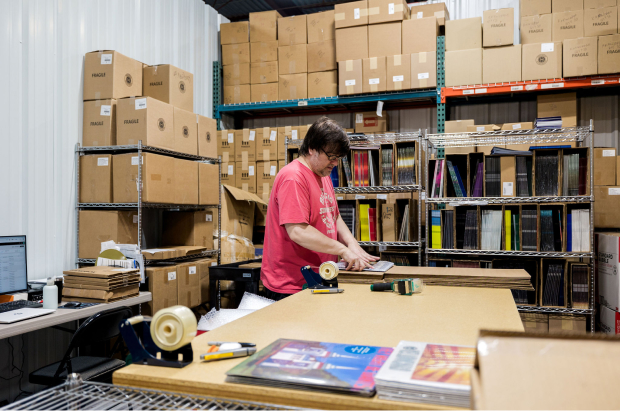
How WareSpace Can Help Small and Medium-Sized Businesses
WareSpace is dedicated to supporting small and medium-sized businesses through its shared small warehouse solutions. By engaging with WareSpace, businesses can access a range of services designed to enhance their shipping processes and improve client satisfaction. This final section outlines the steps for businesses to partner with WareSpace and the benefits of our innovative warehousing solutions.
In conclusion, mastering the shipping process workflow is essential for businesses seeking to thrive in the competitive marketplace. By understanding the key components, challenges, and international intricacies of shipping, and leveraging the benefits of efficient workflows and small warehouse spaces, businesses can significantly enhance their operational efficiency and customer satisfaction. WareSpace stands ready to empower your business with the tools and support needed to transform your shipping strategy into a formidable competitive advantage.Book a tour today!
Blog Info: Author – James Park Category – Shipping and Packaging Insights
In the fast-paced world of logistics, the term ‘fulfillment’ encapsulates the art and science of meeting customer demands effectively and efficiently. It’s a complex ballet of processes that takes place within the bustling walls of a warehouse. For businesses aiming to grow and thrive, mastering this art form is not just beneficial; it’s essential.
But why is efficient fulfillment so critical for business expansion? Simply put, the quicker and more accurately a business can move products from the warehouse to the customer’s doorstep, the happier the customer is. This satisfaction leads to repeat business, word-of-mouth recommendations, and a solid foundation for growth. Yet, small to medium-sized businesses (SMBs) often grapple with fulfillment challenges such as limited space, skyrocketing overhead costs, and inefficient inventory management.
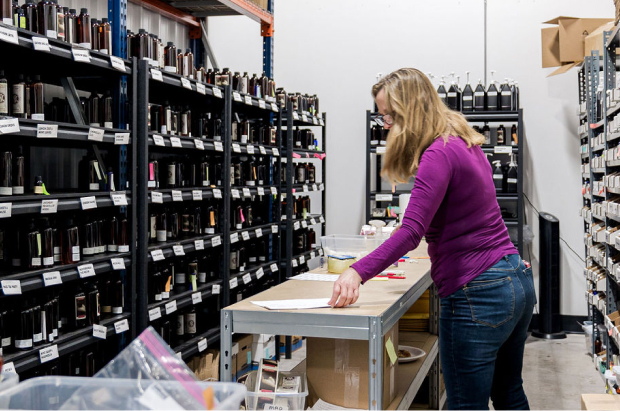
The Basics of Warehouse Efficiency
When we speak of warehouse efficiency, we’re referring to the strategic orchestration of a warehouse’s operations to maximize productivity and minimize waste. It’s a crucial cog in the machinery of customer satisfaction and impacts the financial health of any business. Efficient warehousing revolves around three pillars:
- Layout Design: Optimizing the physical space for easy access and movement of goods.
- Inventory Tracking: Ensuring real-time knowledge of what’s in stock and where it is.
- Workflow Management: Streamlining processes to reduce time and labor costs.
By focusing on these key factors, businesses can achieve a level of warehouse efficiency that not only supports their current operations but scales with their growth aspirations.

The Rise of Shared Small Warehouse Spaces for Modern Business Needs
Enter the innovative concept of shared small warehouse spaces — a game-changer for SMBs. These communal hubs offer:
- Reduced Overheads: Sharing space means sharing costs, which lowers the financial burden on individual businesses.
- Flexibility and Scalability: As demand fluctuates, so can the amount of space and resources used, allowing businesses to remain agile.
- Collaboration Opportunities: Businesses can benefit from shared knowledge and possibly even share shipments to reduce costs.
By sharing warehouse space, SMBs find that they can enjoy the facilities and systems usually reserved for larger corporations. From e-commerce startups to growing retailers, many have found success in this modern warehousing model.
Overcoming Fulfillment Challenges with Warehouse Efficiency
Shared small warehouse spaces are more than just a place to store products; they are a dynamic solution to fulfillment challenges with warehouse efficiency at their core. SMBs can leverage these spaces to improve inventory management through shared technology and systems. Moreover, they can streamline operations by adopting efficient workflows modeled by the shared space provider. This approach not only optimizes the fulfillment process but also fosters a collaborative environment where businesses can pool resources and knowledge.
The Power of Shared Warehouse Efficiency and Its Key Takeaways
The demand for shared small warehouse spaces is on the rise among SMBs, driven by the need for cost-effective, flexible, and collaborative warehousing solutions. To summarize, these shared environments offer:
- Cost-Effectiveness: They significantly reduce the financial barriers to efficient warehousing.
- Flexibility: They provide the ability to scale up or down quickly in response to business needs.
- Collaboration: They create opportunities for businesses to work together and innovate.
For SMBs aiming to overcome challenges with warehouse efficiency, shared spaces are not just a temporary fix but a strategic move toward sustainable growth.

Embracing Shared Warehouse Efficiency for Business Growth
Addressing fulfillment challenges through warehouse efficiency is not just a logistical concern but a strategic imperative for SMBs looking to expand and excel in today’s market. The emergence of shared small warehouse spaces has revolutionized the way smaller players can compete, offering a pathway to optimized inventory management, streamlined workflows, and the kind of scalability previously reserved for their larger counterparts. These communal warehousing solutions are a testament to the innovative approaches that are now accessible, fostering a collaborative and cost-effective environment for businesses.
By adopting shared warehouse spaces, SMBs can focus on their core business goals, secure in the knowledge that their fulfillment processes are as efficient as they are effective. Whether you are just starting or looking to refine your existing operations, the time to consider shared warehouse efficiency is now. It is a powerful step towards not just meeting customer expectations but exceeding them, thereby driving business growth and ensuring long-term success.
For those interested in experiencing the efficiency of shared warehousing, WareSpace offers tours of its facilities across the United States to showcase how these solutions can work for your business.
Blog Info: Author – Michael Thompson Category – Shipping and Packaging Insights
Ecommerce sales have been on the rise for the last several years. The pandemic triggered a rapid acceleration in growth among online retailers, with sales in 2020 increasing by 43% compared to 2019. Today, the growth of ecommerce continues. According to the U.S. Census Bureau, as of the third quarter of 2022, ecommerce continued to grow, showing a 10.8% increase from the same quarter of the previous year. Your ecommerce business can grow with the industry, but you must think about how you store your inventory and seriously consider the benefits of having warehouse space for ecommerce companies.
What Is eCommerce Warehousing?
Ecommerce warehousing solutions offer several benefits for online retailers including space needed to store, sort, and ship products they sell online.
Why Moving Your eCommerce Company from a Garage or Living Room to a Small Warehouse Space Is Beneficial
Your home only has so much space available for you to live in and run a business. Reaching your home’s storage capacity, by filling any free space with inventory for your e-commerce business, limits the amount that you can sell. Plus, by having goods in multiple spots around your home, you have a greater chance of losing track of what you have available in your inventory and when you need to reorder products.
Ecommerce warehousing solutions provide the answer for many small businesses needing storage space. Not all businesses need large warehouses. Learn why WareSpace’s small warehouses are perfect for your ecommerce warehousing needs. Our options allow you to select a warehouse space that matches your volume of inventory. When moving from your home and into a warehouse for the first time, you will likely find that a small warehouse space is sufficient for your storage needs. As your business grows, your warehouse space should, too. Scalable warehousing means that you can choose a larger or smaller warehouse space as your business needs change.
In brief, moving from your home into a warehouse provides you with the advantages other businesses have and helps you to compete among other ecommerce retailers.
5 Benefits of Having Warehousing for eCommerce Businesses
When considering whether ecommerce warehousing solutions are right for your business model, consider your budget, time, and supply needs. Also, recognize that you can gain significant advantages by moving your ecommerce business operations and inventory into a small warehouse space.
1. Ship from Locations Closer to Your Customers
If you want to become affiliated with Amazon through its Seller Fulfilled Prime program, you must have the ability to prepare, package, and deliver orders within two days. This strict requirement stems from the company’s overall ability to meet those short deadlines in its own deliveries. For a small business to meet this type of shipping requirement, you should have a facility that can keep your inventory sorted and ready to package and ship at a moment’s notice. Plus, the warehouse location allows you to position it closer to your customers, thus shortening delivery time. Even if you don’t partner with Amazon, you should still work toward reducing delivery times to keep customers happy. One way to do so is by using a warehouse from which to send your products.
2. Keep Your Inventory Secure
Inventory is a major component of your ecommerce business’ budget. In fact, startup companies may spend between 25% and 35% of their operating budget on inventory. With such a deep investment in the goods you sell, you need to keep them secure. Ideally, you should select an ecommerce warehousing facility that offers 24/7 security with video monitoring of the premises and access control of your space. With these control measures, you can have greater peace of mind that your inventory will be available and protected from theft.
3. Improve Inventory Organization
Homes, garages, and even self-storage units that store inventory for the smallest of new ecommerce businesses don’t offer space to organize or sort products. With a dedicated small warehouse space to organize products, the chance of losing inventory items in clutter drops.
4. More Easily Implement Warehouse Management Tactics
To start using a warehouse management system (WMS), you need to know what you have in your inventory. With an organized ecommerce warehouse storing all your goods, you can more quickly account for all the inventory goods you have. Use this information to facilitate the setup of your WMS, which you can connect to your ecommerce site to further make selling products and buying inventory even easier.
5. Increase Inventory in Scalable Spaces
While your home has a limited amount of space, ecommerce warehouse solutions include a variety of space sizes. As your business grows, you can move into a larger warehouse facility with ease. Similarly, if you need to scale back on your inventory, you can move into a smaller warehouse space.
What Happens If You Don’t Seek eCommerce Warehouse Solutions for Your Business
While ecommerce warehousing offers several advantages for businesses, few online retailers recognize the dangers of not expanding into a small warehouse space. If you keep running your business out of your home, as your retail sales grow, you will face many problems that could impact your bottom line.
1. Hit a Growth Ceiling
Your ecommerce business could hit a growth ceiling. Without storing your inventory in an ecommerce warehouse, you will only be able to grow your business as much as the space in your home allows you to keep your products. Over time, your family members may not like that your business has overtaken the house or garage.
2. Lose Inventory and Money
Another danger of not having a small warehouse space for your ecommerce business is losing money due to poor organization. Not having an organized warehouse for your ecommerce inventory makes losing inventory items more likely. Similarly, reordering products before you need them means that you will have used money and wasted space with excessive products in your home storage.
3. Waste Time
Finally, time and money are intricately linked in the business world, including for small ecommerce businesses. Therefore, anything that wastes time also will cost you money because you will not be able to spend as much of your attention on building customer relationships and improving your business. Wasting time finding inventory items, not knowing what you have on hand, or needing to contact customers because of out-of-stock products all can cost your ecommerce business money.
Your Space Is Ready
Take the chance to expand your ecommerce business by moving your inventory into a small warehouse space. You’ll reap the benefits of a better organized and more secure area for your goods. Why wait any longer to make your move toward greater growth? Your space is ready at WareSpace.
How is your small business doing in 2023 as compared to the time before the pandemic? While the economy suffered significant problems in the last three years, small businesses have weathered the storms of supply chain issues and inflation surprisingly well. A survey at the end of 2022 showed that small businesses saw 4.6% better financial health than in 2019, before the pandemic. This year may be the time to invest in the future for your operations with small warehouse space. A well-managed warehouse gives your business room to grow.
How Small Warehousing Can Help Your Business
Don’t limit your notion of what small warehousing can do for your business to product storage. When you have a small warehouse space, your business benefits in several other ways beyond inventory management. If you are interested in learning more about WareSpace’s small warehouses book a tour to come visit us.
Improved Purchasing Decisions
Small warehouse spaces should have racking for inventory storage. Clear visibility and organization of your products let you see at a glance when your stock gets low. Ideally, you would have a warehouse management system (WMS) software to help keep count of the products you have on hand as customers order them.
Whether you keep tabs on your inventory manually or with software, organizing your stock is the first step. The space and racking in a small warehouse space give you the tools needed for inventory organization. By knowing what you do and don’t have, you avoid wasting money on unneeded product purchases or buying more products than you will sell.
Improved Production Quality
A warehouse ensures that you have full control over the production, packing, and shipping of your products. When doing all these tasks from one location, you can ensure that every item leaving your warehouse meets your quality standards. Being able to maintain high quality keeps your customers happier and more likely to become repeat buyers.
Leverage Cyclical Growth
Cyclical changes may require having access to extra space. Scalable warehousing solutions that let your business move from a small warehouse to a medium facility as sales booms.
However, your business does not need to scale up and down during the year to take advantage of warehousing solutions. A small warehouse space gives many businesses enough extra space to stock extra products to meet demands.
Small warehouses, such as WareSpace, offer expansion and renewal options if you end up growing too quickly. There is the freedom to expand with your needs. Conversely, if you purchase a larger warehouse with a long lease, there may not be the option for you to expand or decrease space depending on what is needed. This means your only option will be to sublease the space for the remainder of the agreement if you do want to make a change.
Risk Management
By keeping your inventory in a secure warehouse on the correct type of racking or shelves, you reduce the risk of product loss
Stored at home, thieves may steal your inventory during a break-in. You may not be able to locate items in a poorly organized garage storage space. Or, improper storage could damage products. With security on site and racking to organize and support inventory, a small warehouse space helps you to mitigate the risks that come with operating your small business from your home.
Offers Additional Storage
Small businesses that move from home or storage unit operations into warehouses gain the space and racking necessary for better inventory organization. A well-organized warehouse gives you quick access to more products at once. Plus, small warehouse spaces offer more room than home garages or guest bedrooms, allowing you to expand your inventory.
Improved Order Processing
Find products that customers order quickly when you have your stock neatly organized in your small warehouse. Faster processing reduces the time required to send customers their orders, which can cut total order fulfillment times.
How WareSpace Can Help Your Small Business
WareSpace provides warehousing solutions to small businesses. You will also find amenities not offered in other shared warehouse spaces. These include:
- Warehouse equipment
- Industrial-grade racking in each unit
- Facility-wide security cameras and systems
- 24/7 access to your warehouse
- Meeting space
- Lounge
- Kitchen
- Electricity and secure wi-fi in every warehouse
- Loading dock access
- On-site manager
- Package receiving
- Scalable spaces
- All-in-one pricing
With WareSpace, your business will be able to send and receive more inventory, host meetings for your employees in our conference room, relax in the lounge or kitchen, or access your warehouse at all hours of the day.
WareSpace’s variety of warehouse space sizes and amenities appeals to the needs of businesses from a variety of different fields. Want to see for ourself? Book a tour to see one of our amazing WareSpaces located near you.
Types of Businesses That Benefit the Most From Small Warehousing
Small warehousing solutions are perfect for many small businesses. Several types of companies take advantage of these smaller spaces to get professional storage solutions without renting a large-scale warehouse.
Ecommerce Brands
Ecommerce brands that sell directly to consumers benefit from a small warehouse space for better organization of their products. Typical businesses within this category that use small warehouse spaces include Amazon sellers, clothing companies, eBay businesses, drop shippers, and Etsy sellers.
Good organization can speed up order fulfillment and help with the prompt delivery requirements of many online sites. For example, small businesses that sell through Amazon as part of the Seller-Fulfilled Prime program must deliver orders within two days. Some companies can use small warehousing solutions in multiple cities to cut delivery times for online orders.
Professional and Technical Services
Small warehouse spaces can also benefit non-retail companies. Professional and technical businesses, such as non-profits, rental companies, plumbing service companies, small firms, and real estate businesses benefit from the extra storage of small warehouse space. Stocking rental equipment, signage, products for events, or donations in a small warehouse allows these businesses to stay organized.
Plus, the shared office perks of WareSpace solutions, such as conference rooms and meetings, allow for business operations to take place without the need for another building.
Arts, Creative, and Recreation
Creative individuals and businesses need space for the creative process. For instance, photographers, videographers, podcasters, and artists need room to have their equipment for their artistic endeavors. A small warehouse space gives these businesses or individuals space for storing goods, production, and following their creative passions.
Light Manufacturing & Assembly (Solar, Wood, and Manufacturing)
Light manufacturers can use small warehousing as a storage solution for products that complete the production phase and await installation. The companies can also use the space for minor manufacturing tasks.
Solar, wood, or manufacturing companies that need room for production and storage benefit from small warehouse spaces that have built-in electrical outlets and industrial storage racking and warehouse equipment.
Find Out How WareSpace Small Warehousing Solutions Can Help Your Business
Are you prepared to upgrade to a more professional setting for your small business inventory and operations? Check out the spaces available at WareSpace. With options that range from small, which is great for new companies, to large, for established sellers looking for extra space. You’ll find the warehouse space for your needs. Visit WareSpace to learn more about our warehousing options and how to get started.
Do you have what you need for your business to succeed? According to a report from the Small Business Administration, roughly over the last 30 years, only 67.6% of new businesses survived their first two years. Long-term survival numbers become bleaker — with only 48.8% of businesses lasting more than five years and only 25.7% making it to the 15-year mark.
If you want your business to not only survive but thrive in the future, you’ll need to think like a large, established business. Small warehouse space could provide you with the edge you need to meet your company’s changing needs as it grows. The space might be small, but the impact it will have on our business is huge.
What is Small Warehousing for Businesses?
Warehousing is a vital component of storing and distributing products for businesses of all sizes. However, at the end of 2022, small businesses faced a reduction in available warehouse space with many larger companies pushing them out. During the third quarter of 2022, vacancies for industrial real estate were a paltry 3.2%, compared to 5% during the same quarter of 2020.
However, a limited availability of options does not mean that your small business cannot find or benefit from warehouse space. Shared warehousing that offers small warehouse space is a better fit for newly growing businesses. Plus, many of the larger companies don’t use these smaller spaces, freeing these storage solutions for smaller businesses.
Small warehousing for businesses features a variety of storage site sizes. Businesses newly moving into a warehouse benefit most from the smallest spaces. These spaces have everything your business requires to get your inventory securely and safely stored. Amenities vary by location, so look for a site that offers the perks your business needs. Ideally, you should have access to a loading dock, package receiving, secure access to your warehouse, on-site security, industrial racking, and secure Wi-Fi in your unit.
Why Your Small Business Needs Warehousing
How are you keeping track of your inventory? If you are like 50% of small businesses, you started working from your home. Among small companies without employees, 60% continue home operations. If you use a small room or rented storage unit, your business will eventually feel the constraints of those places. Small warehouse spaces can improve your business operations and boost your chances of helping your business to be one of the few businesses that will continue to succeed in the future.
Future Proofing
You will need to plan for your future growth as you maintain your existing operations. A small warehouse gives your business the space it needs to grow over time. With options that include small, medium, and large spaces, you can choose warehouse spaces that match the growth of your operations.
Improved Production, Quality, Storage, and More
Warehouse spaces offer high-quality spaces for securely storing even extremely heavy or delicate pallets of products. Racks keep your products off the ground, where pests can damage even non-food cardboard or wood products. Compared to stacking goods on the ground, racks also protect your inventory items from falling over and sustaining damage.
With better racking and warehouse organization quality, you lose fewer items due to damage or poor storage conditions. Plus, you have the space to grow your inventory with your business.
Ensuring Visibility
Visibility within the community is important. You gain connections through networking with other small businesses. A small warehouse space gives you a more professional site to host meetings with your employees. Plus, you have a formal space where you can take better pictures of your inventory for your online store and social media.
Shipping
A small warehouse space makes it easier to send and receive packages. With access to a loading dock, you can process pallet loads or truckloads of goods. Receiving packages on-site is another perk of small warehousing.
Both sending and receiving goods from your small warehouse space lets you stay at your business instead of going out to the post office or shipping company to pick up or send deliveries.
Managing Inventories
With a warehouse, you have the space to organize all your inventory and finally get your products logged into a warehouse management system (WMS) software program. WMS allows you to know what you have on hand for order fulfillment. You can even connect this type of software to your ecommerce website to ensure that you do not sell sold-out products. Plus, if your inventory runs low, the WMS can instantly order additional products.
These methods of managing your inventory can help you to future-proof your warehouse and your business. Your WMS can help you to meet the high demands of online shoppers, who have many places to choose from. As your online business grows, you will need to use your WMS to ensure that customers have a smooth ordering process and quickly receive their orders. Using your warehouse space with WMS software can help your small business continue to grow and thrive.
Consider What Your Company Needs in a Small Warehouse Space
What does your company need in its storage space? Do you need organized racking for holding your goods? What about storage options that include several sizes for future growth? Do you have employees that you will need to meet with in conference rooms?
Examine how your business operates and ask what tools you need to grow. Use answers to this examination of your business to determine the small warehousing partner to work with.
How WareSpace Can Help Your Small Business
WareSpace does more for small businesses than simply offering storage space. Every warehouse space has an all-in-one price that includes security, utilities, loading dock access, on-site security, Wi-Fi, and package receiving. Plus, you have industrial-grade racking and pallet movers to keep your stock securely stored.
You can operate your business more professionally with a shared conference room and kitchen spaces. Mail drop and package receiving let you keep all your operations in one building, so you save time to focus on keeping your small business going. WareSpace gives your business the perks of a warehouse and shared office without needing to rent both.
Is It Easy to Transition to a Small Warehouse Space?
How easy is transitioning to a small warehouse space? The answer depends on how much inventory you need to move. However, after moving your stock to the warehouse, the last steps in the transition would most likely be updating your shipping address and organizing your new space.
With more space to keep products sorted, you’ll be able to find items and fulfill orders faster. You’ll find the transition from your home or a storage unit into a small warehouse space is easier than starting your business.
A Small Warehouse Space Can Boost Your Small Business
Your small business can have the space and amenities needed to grow with full-featured small warehouse space. Is your business ready to wield the tools it needs to move forward? We’re ready for you at WareSpace. Contact us today.
In 2022, eCommerce continued to climb its rapid upward trajectory with 268 million American shoppers buying from online stores. It is estimated that in the next three years, online shoppers will grow to an estimated 284 million. If you have an ecommerce business, you may need to start thinking about expanding now. One solution is by learning more about ecommerce warehousing solutions and how they can help your business to make necessary changes for growth.
What is ecommerce warehousing? It involves the storage, securing, and preparation of products for online sales. Technically any place where you store your inventory can act as a warehouse. However, your garage will not offer your business the same space and management capabilities of an ecommerce warehouse.
How Does Ecommerce Warehousing Work?
Warehousing for ecommerce goes beyond merely stacking boxes of products and waiting for sales. Inventory management and product security are vital aspects of warehousing for all industries. In a world where online commerce fluctuates with demand, tracking inventory and protecting the goods that you have on hand are very important, to ensure prompt order fulfillment.
Inventory Management
Inventory management includes knowing what you have on hand, when the inventory levels of products change, how often to reorder inventory items, and where you should store the items in your warehouse for the best retrieval.
Product Security
Product security includes keeping your inventory items safe from theft, damage, and loss. On-site security prevents loss from theft. A well-built structure with shelves or racks to store items safely protects goods from damage caused by improperly stacking boxes. Finally, an ecommerce warehouse with an organized inventory means that you know exactly where your products are and how many you have. This can reduce the loss of time and money caused by products that disappear amid the clutter.
What Are the Different Types of Ecommerce Warehouses?
Several forms of ecommerce warehouse solutions exist. They differ in size, ownership, and operations. The best ecommerce option for your business depends on your budget, company size, inventory volume, and needed shipping times.
Bonded Warehouses
The government owns bonded warehouses. These facilities offer long-term or short-term storage of goods while awaiting customs approval. You may need to pay customs dues and fill out paperwork for incoming or outgoing products. The name comes from the “bond” issued to businesses that rent space in these facilities.
Consolidated Warehouses
Consolidated warehouses allow owners to collect goods from multiple supplies and combine them into deliveries for the same area. Inventory items do not spend much time in these warehouses, which reduces the space needed and the overall cost to use.
Cooperative Warehouses
Cooperative warehouses permit multiple businesses that sell related products to keep their goods in a shared space. Businesses in partnerships with others may benefit from the shared space and cost of a cooperative warehouse.
Government-Owned Warehouses
The government owns and operates government-owned warehouses, which provides reduced rates to businesses in specific fields. One downside to these facilities is the consequence of nonpayment. All inventory stored in the warehouse could come under government seizure if the business fails to pay its lease.
Private Warehouses
Mostly large corporations, such as Amazon, own and operate private warehouses that only store that company’s goods for sale. Manufacturers, distributors, and wholesale producers may also own private warehouses. These facilities need the resources of such large companies to ensure proper management of the warehouse and maintaining the facility.
Public Warehouses
Third-party ecommerce warehousing companies own public warehouses, which they lease space out to individual businesses for use. These facilities have various sizes and widely varying amenities that range from none to a full suite of features including security, loading docks, logistics equipment, Wifi, and more.
Smart Warehouses
Larger companies that can afford additional automation tools tend to own smart warehouses. These facilities incorporate AI, robotic arms, automated storage and retrieval systems (AS/RS), drones, and data to vastly improve inventory tracking and management of large volumes of goods.
What Factors Should You Consider When Setting Up Ecommerce Warehousing?
When setting up your ecommerce warehouse, think about how you need the space and how you will use it. Factors to think about during setup include available space, equipment, safe operations, on-site security, and inventory management.
The space will depend on your typical volume of sales and how much inventory you need to keep on hand. The first warehouse for most ecommerce businesses tends to have a small space. However, as the business grows, you should scale up the warehouse with your sales.
Small Warehouse Equipment
Equipment for storing and moving equipment can protect you or any employees you have from injury while also keeping your goods organized and safely stored. Look for facilities that provide logistics equipment, such as dollies and pallet jacks. The facility should also have racking for safely storing your inventory. Other important pieces of equipment include packing equipment and locations on-site for sending and receiving goods, such as loading docks or mail drops.
Safety and Security
Safety and security are both important factors in running a warehouse. You need to make sure that you know the requirements from the Occupational Safety and Health Administration (OSHA) for safe warehouse operations. These guidelines ensure that everyone in your warehouse stays safe while working. You must educate yourself on warehouse safety but also choose a space that allows you to have room to operate without creating hazards.
Security from on-site security cameras and only allowing access to your warehouse by authorized personnel are important things to look for in any warehouse. Products stolen from your warehouse increase your operating budget. Good on-site security reduces your chances of loss.
Inventory Management
Your inventory management will be up to you. You can choose from a variety of warehouse management systems (WMS), which are software programs used to track and order inventory. With these systems, you can look at your computer to determine if you have enough stock available for a seasonal rush. Additionally, these systems allow you to connect your ecommerce retail site. Customers can get order verification and shipment tracking automatically. Plus, the WMS can automatically order inventory items that sell out.
In brief, the features of the warehouse you use for your ecommerce business can impact your inventory management and business operations.
Your Space Is Ready
Once you understand how ecommerce warehousing works, you can fully appreciate the capacity it has to provide your business with the tools you need for growth. At WareSpace, we have several warehouse space options. Check them out to find the perfect space for your ecommerce business.
Your space is ready. Are you?
